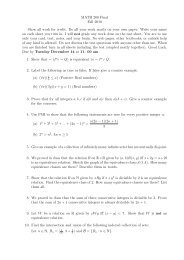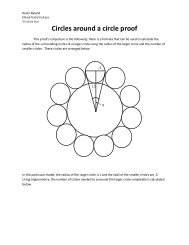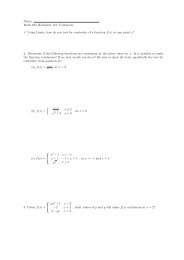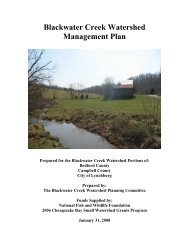Plant Growth in Aquaponic System through Comparison of Different ...
Plant Growth in Aquaponic System through Comparison of Different ...
Plant Growth in Aquaponic System through Comparison of Different ...
You also want an ePaper? Increase the reach of your titles
YUMPU automatically turns print PDFs into web optimized ePapers that Google loves.
number that corresponded to a pot on the raft was drawn from a pot, and that number was<br />
assigned to the treatment next on the list. Two pots were left empty <strong>in</strong> order to have an equal<br />
number <strong>of</strong> pots per treatment. All plants were planted on October 3, 2011. (Pot size- <strong>in</strong>ternal<br />
volume- how much grow<strong>in</strong>g media was available to the plants)<br />
Two hundred channel catfish were added to the NFT and the same number to the float<strong>in</strong>g<br />
raft system on October 26 (Figure 5). This date for stock<strong>in</strong>g was after my plant<strong>in</strong>g date due to<br />
availability <strong>of</strong> fish. Channel catfish were obta<strong>in</strong>ed from a hatchery <strong>in</strong> eastern Virg<strong>in</strong>ia, were<br />
pellet tra<strong>in</strong>ed and a good choice for this type <strong>of</strong> system (Shahady personal commentation). While<br />
the fish are an important component <strong>of</strong> an aquaponic system, this project was designed to study<br />
plants thus any discussion <strong>of</strong> fish <strong>in</strong> this system is a separate study. (where were the fish<br />
obta<strong>in</strong>ed from- what hatchery, age/size)<br />
(picture to come)<br />
Figure 5 – Channel Catfish stocked <strong>in</strong>to the <strong>Aquaponic</strong> units.<br />
Type <strong>of</strong> system<br />
Construction <strong>of</strong> the system was based on similar units <strong>in</strong> use at Grow<strong>in</strong>g Power Inc.<br />
(where is it located) (Will Allen personal communication, 2010). The types <strong>of</strong> systems used<br />
were the nutrient film technique (NFT) and float<strong>in</strong>g raft. In the NFT, a th<strong>in</strong> layer <strong>of</strong> constantly<br />
flow<strong>in</strong>g water provides a cont<strong>in</strong>uous supply <strong>of</strong> water, nutrients, and oxygen. In the float<strong>in</strong>g raft<br />
system, plants roots grow directly <strong>in</strong>to a conta<strong>in</strong>er <strong>of</strong> water. The rafts provide optimum root<br />
exposure to the nutrient water (Rakocy, 1988). The styr<strong>of</strong>oam boards also shield the water from<br />
direct sun light to help ma<strong>in</strong>ta<strong>in</strong> lower water temperatures, which is beneficial for plant growth<br />
(Rakocy, 1988). (re-word)






